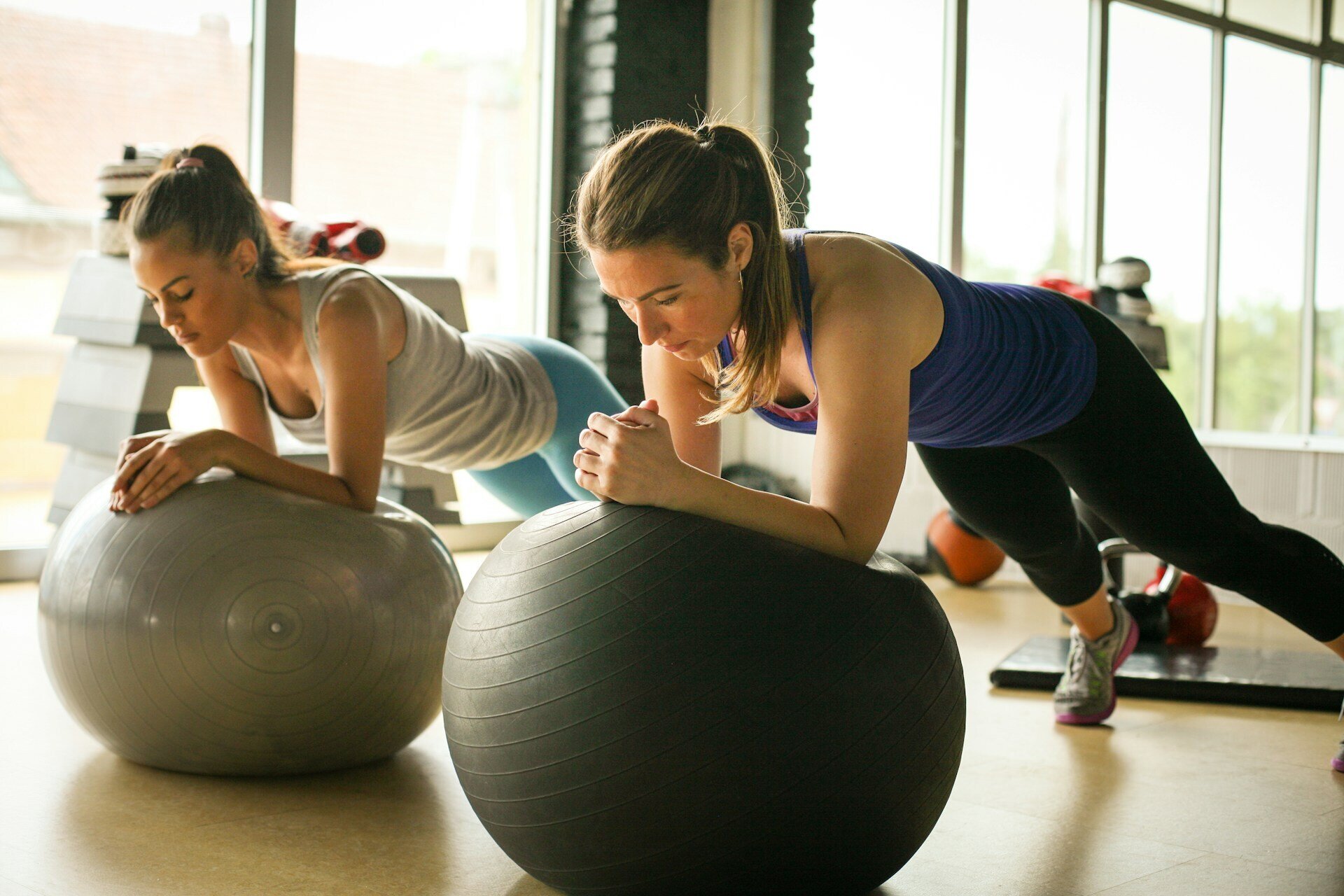HIIT vs. кардіо: що обрати для спалювання жиру

Коли мета — спалити жир, покращити форму й витривалість, більшість стоїть перед дилемою: HIIT чи класичне кардіо? Обидва формати ефективні, але діють по-різному на тіло, серце і гормональну систему.
Розберімось, у чому різниця, кому який формат підходить, як їх комбінувати — і як за допомогою фітнес-додатків зробити тренування системними та вимірюваними.
Перегляньте також наш матеріал ТОП-10 найкращих фітнес-додатків для смартфона — у ньому ми зібрали застосунки, які допомагають відстежувати пульс, калорії та прогрес у HIIT і кардіо-програмах.
Що таке HIIT (високоінтенсивне інтервальне тренування)
HIIT (High-Intensity Interval Training) — це короткі, але дуже інтенсивні відрізки роботи (20–60 секунд) з короткими фазами відпочинку (10–30 секунд).
Мета — довести пульс до 80–90% від максимуму, створюючи «метаболічний ефект після спалювання».
Основні переваги:
- Швидке спалювання калорій: навіть 20–30 хв HIIT можуть спалити до 300–400 ккал.
- EPOC-ефект: тіло продовжує спалювати жир після тренування (до 24 годин).
- Підвищення витривалості та сили одночасно.
- Мінімум часу: підходить тим, хто має щільний графік.
Недоліки:
- Не підходить новачкам без підготовки.
- Високе навантаження на серцево-судинну систему.
- Потребує якісного розігріву та відновлення.
Що таке класичне кардіо
Кардіо-тренування — це помірна безперервна активність (біг, ходьба, велосипед, плавання, еліпс), де пульс тримається на рівні 60–75% від максимуму.
Тривалість — від 30 до 60 хвилин.
Основні переваги:
- Безпечніше для новачків і людей із надмірною вагою.
- Покращує роботу серця і легенів.
- Добре поєднується з силовими тренуваннями.
- Психологічне розвантаження: можна слухати подкасти або медитувати в русі.
Недоліки:
- Потребує більше часу.
- Після зупинки активність метаболізму швидко падає.
- Менш ефективне для росту м’язів і короткочасного підйому гормонів (тестостерон, гормон росту).
HIIT vs. кардіо — що краще для спалювання жиру?
|
Параметр |
HIIT |
Класичне кардіо |
|
Час тренування |
15–30 хв |
40–60 хв |
|
Інтенсивність |
Дуже висока |
Помірна |
|
Калорії під час тренування |
250–400 ккал |
300–500 ккал |
|
Калорії після тренування (EPOC) |
+10–15% додатково |
майже 0 |
|
Вплив на м’язи |
Зберігає м’язову масу |
Може зменшити при дефіциті калорій |
|
Пульсова зона |
80–90% HRmax |
60–75% HRmax |
|
Підходить для початківців |
Обережно, під наглядом |
Так |
|
Підходить для схуднення |
Так, якщо контролюєте навантаження |
Так, якщо тривалість достатня |
Висновок:
- Якщо ви маєте обмежений час і хочете швидкий результат — обирайте HIIT 2–3 рази на тиждень.
- Якщо ви новачок або відновлюєтесь після травми — почніть із помірного кардіо 3–5 разів на тиждень.
- Ідеальний варіант — комбінація обох форматів.

Комбінований підхід: «золота середина»
Найкращі програми схуднення 2025 року поєднують HIIT + кардіо + силові.
Наприклад:
- Пн: HIIT (20 хв)
- Ср: Біг або ходьба (40 хв)
- Пт: Силове тренування
- Нд: Йога або розтяжка
Такий баланс:
- Підтримує активний метаболізм.
- Зберігає м’язову масу.
- Мінімізує ризик травм та перевтоми.
Який тип тренування вибрати саме вам?
1️⃣ Якщо у вас сидяча робота та мало часу:
→ HIIT або 15–20-хвилинні інтервальні воркаути вдома.
Використовуйте додатки Freeletics, Nike Training Club або FitOn для готових програм.
(Читайте: ТОП-10 найкращих фітнес-додатків для смартфона)
2️⃣ Якщо у вас надмірна вага або проблеми зі спиною:
→ Почніть із низькоінтенсивного кардіо — ходьба, плавання, орбітрек.
Поступово додавайте короткі інтервали з підвищенням темпу.
3️⃣ Якщо ви досвідчений спортсмен або фанат ефективності:
→ Комбінуйте: 2 HIIT + 2 кардіо на тиждень, контролюючи пульс через смарт-годинник.
Як контролювати пульс і прогрес
Правильний пульс — ключ до ефективності.
Середній максимум (HRmax) = 220 – ваш вік.
- Для HIIT: 80–90% HRmax
- Для кардіо: 60–75% HRmax
Вимірюйте пульс через:
- Apple Watch (з інтеграцією в Fitness+)
- Fitbit, Garmin, Samsung Health
- або за допомогою фітнес-додатків (див. наш огляд).
Програми типу Strava, MyFitnessPal і YAZIO допоможуть ще й порахувати калорії та відстежити прогрес у динаміці.
Як зробити тренування ефективним
✅ Розминка 5–7 хв: легке кардіо + динамічна розтяжка.
✅ Основна частина: 15–30 хв залежно від формату.
✅ Заминка 5 хв: повільна ходьба, дихальні вправи.
✅ Харчування: через 30–60 хв — білково-вуглеводний прийом їжі (омлет, йогурт з гранолою або ланч-бокс з кіноа і нутом).
Ідеї збалансованих сніданків і обідів шукайте у наших статтях:
— Прості та корисні сніданки для енергійного дня
— Як зібрати ланч-бокс на роботу
FAQ
1. Чи можна робити HIIT щодня?
Ні. Тілу потрібне відновлення. Оптимально — 2–4 рази на тиждень із днями відпочинку або легкого кардіо.
2. Яке кардіо найкраще для спалювання жиру?
Будь-яке, яке тримає пульс у зоні 60–70% HRmax протягом 40–60 хв. Це може бути ходьба, біг, плавання, велосипед або еліпс.
3. Скільки калорій спалює HIIT?
У середньому 10–14 ккал/хв залежно від інтенсивності та ваги. Але «післяспалювання» може додати ще 10–15% від цієї кількості.
4. Коли краще тренуватись?
Найефективніше — тоді, коли вам зручно дотримуватись регулярності. Зранку HIIT підвищує енергію, увечері кардіо допомагає зняти стрес.
Порада редакції
Якщо хочете швидкий результат — поєднуйте HIIT і кардіо, не забуваючи про відпочинок і харчування.
HIIT «запалює» метаболізм, а кардіо закріплює ефект. Використовуйте фітнес-додатки для контролю пульсу, кроків і калорій — це допоможе бачити реальний прогрес, а не лише цифри на вагах.
Оберіть свій ритм, тренуйтеся з розумом — і результат не забариться



